
Manufacturing company Illinois Tool Works (NYSE:ITW) met Wall Street’s revenue expectations in Q1 CY2025, but sales fell by 3.4% year on year to $3.84 billion. Its GAAP profit of $2.38 per share was 1.1% above analysts’ consensus estimates.
Is now the time to buy Illinois Tool Works? Find out by accessing our full research report, it’s free.
Illinois Tool Works (ITW) Q1 CY2025 Highlights:
- Revenue: $3.84 billion vs analyst estimates of $3.84 billion (3.4% year-on-year decline, in line)
- EPS (GAAP): $2.38 vs analyst estimates of $2.35 (1.1% beat)
- EPS (GAAP) guidance for the full year is $10.35 at the midpoint, roughly in line with what analysts were expecting
- Operating Margin: 24.8%, down from 28.4% in the same quarter last year
- Free Cash Flow Margin: 12.9%, similar to the same quarter last year
- Organic Revenue fell 1.6% year on year, in line with the same quarter last year
- Market Capitalization: $70.92 billion
“ITW commenced 2025 with solid execution, achieving financial results ahead of plan expectations as we continued to outperform underlying end markets,” said Christopher A. O’Herlihy, President and Chief Executive Officer.
Company Overview
Founded by Byron Smith, an investor who held over 100 patents, Illinois Tool Works (NYSE:ITW) manufactures engineered components and specialized equipment for numerous industries.
Sales Growth
Examining a company’s long-term performance can provide clues about its quality. Any business can have short-term success, but a top-tier one grows for years. Regrettably, Illinois Tool Works’s sales grew at a sluggish 2.7% compounded annual growth rate over the last five years. This fell short of our benchmarks and is a poor baseline for our analysis.
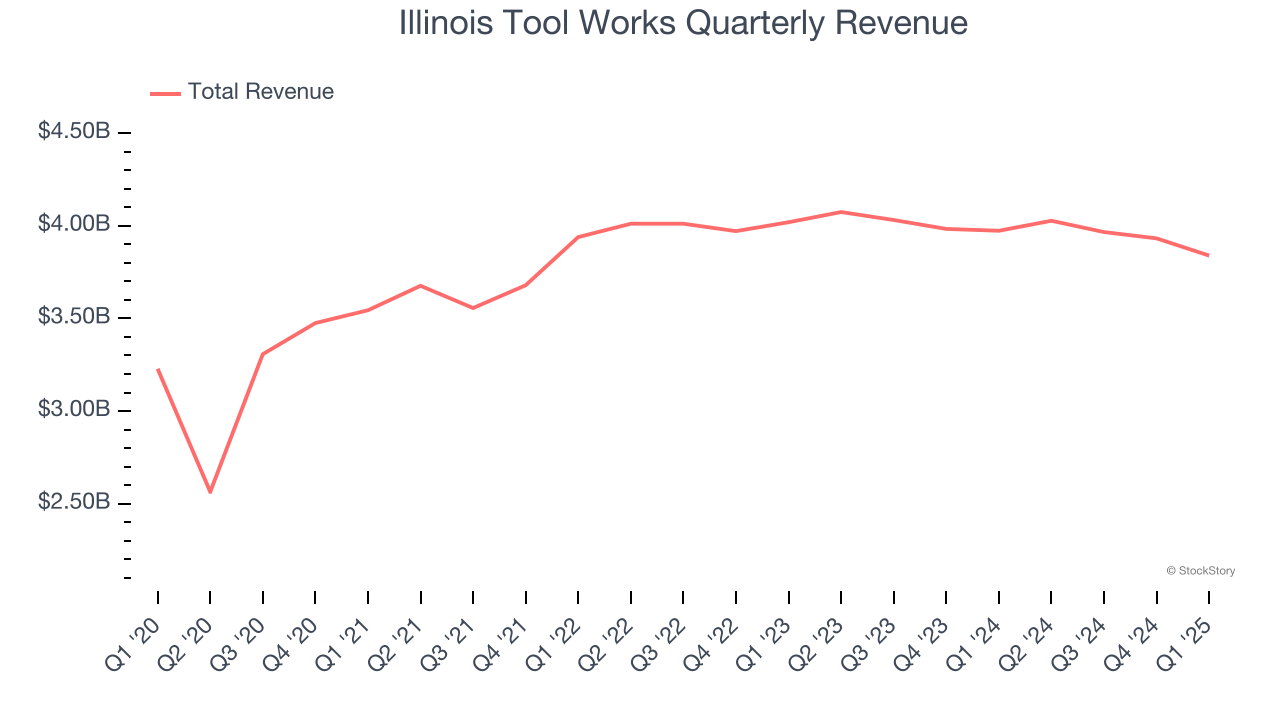
We at StockStory place the most emphasis on long-term growth, but within industrials, a half-decade historical view may miss cycles, industry trends, or a company capitalizing on catalysts such as a new contract win or a successful product line. Illinois Tool Works’s recent performance shows its demand has slowed as its revenue was flat over the last two years. 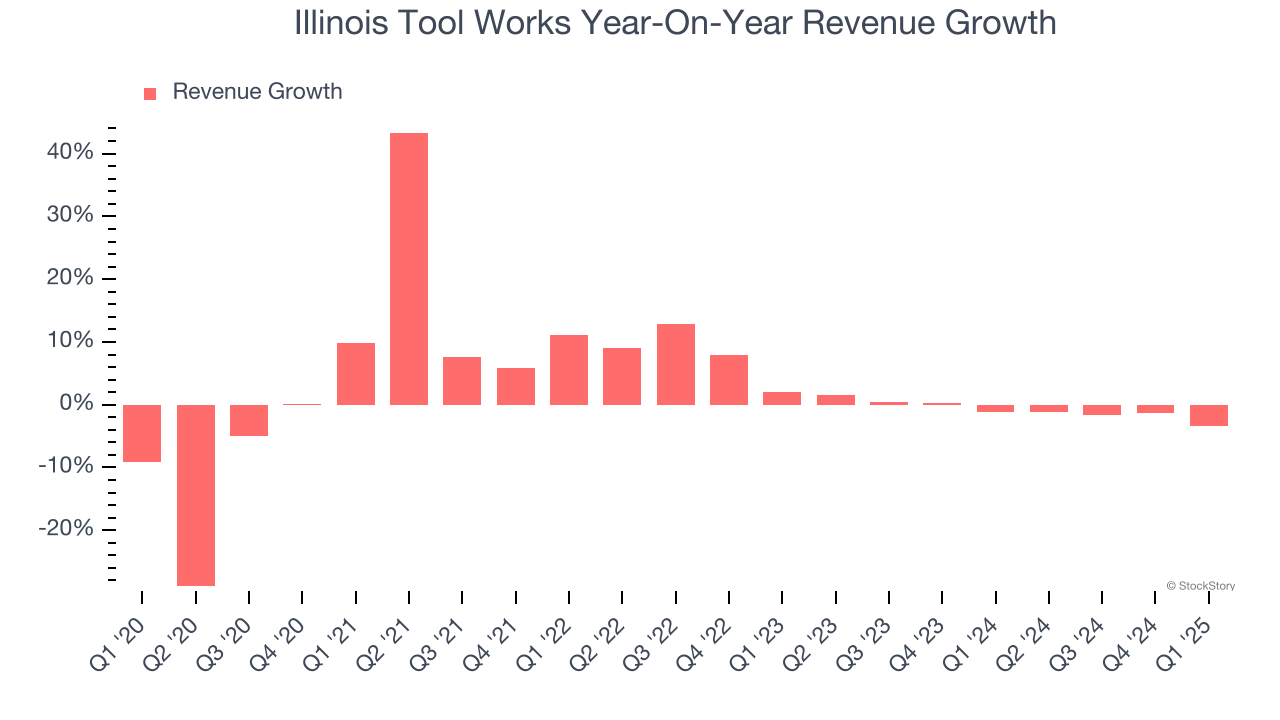
Illinois Tool Works also reports organic revenue, which strips out one-time events like acquisitions and currency fluctuations that don’t accurately reflect its fundamentals. Over the last two years, Illinois Tool Works’s organic revenue was flat. Because this number aligns with its normal revenue growth, we can see the company’s core operations (not acquisitions and divestitures) drove most of its results. 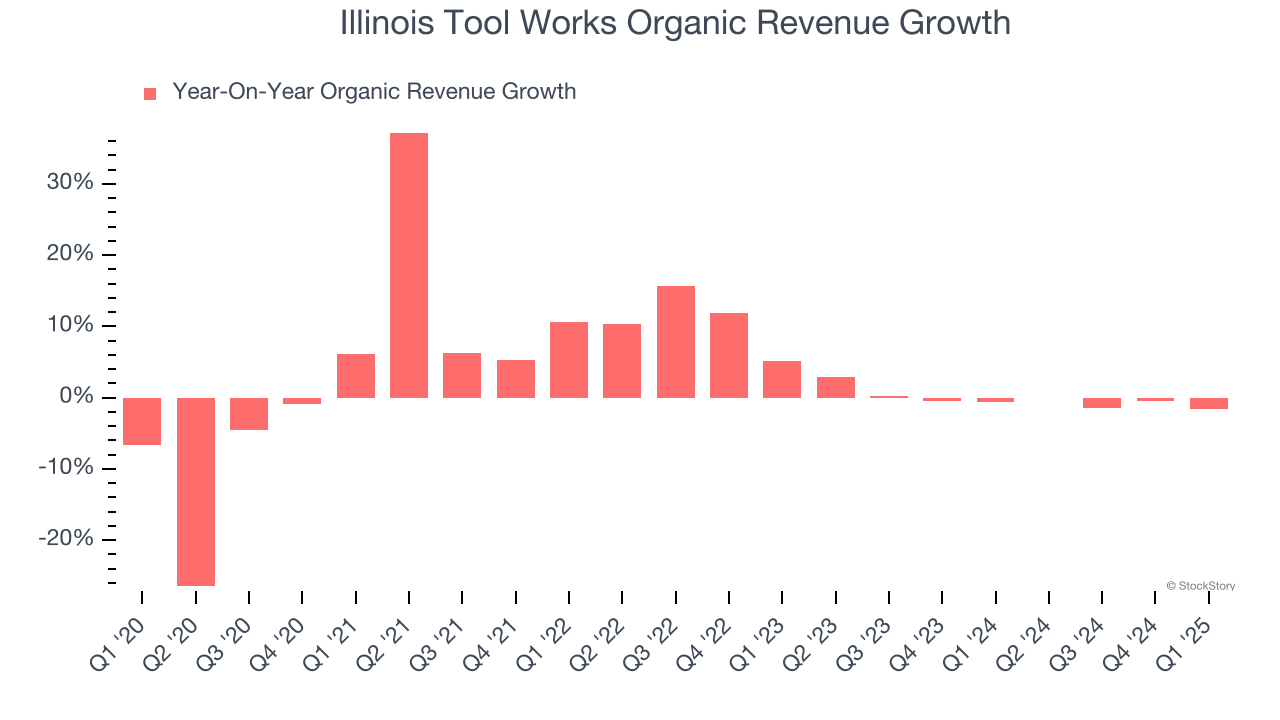
This quarter, Illinois Tool Works reported a rather uninspiring 3.4% year-on-year revenue decline to $3.84 billion of revenue, in line with Wall Street’s estimates.
Looking ahead, sell-side analysts expect revenue to remain flat over the next 12 months. This projection is underwhelming and suggests its newer products and services will not accelerate its top-line performance yet.
Today’s young investors won’t have read the timeless lessons in Gorilla Game: Picking Winners In High Technology because it was written more than 20 years ago when Microsoft and Apple were first establishing their supremacy. But if we apply the same principles, then enterprise software stocks leveraging their own generative AI capabilities may well be the Gorillas of the future. So, in that spirit, we are excited to present our Special Free Report on a profitable, fast-growing enterprise software stock that is already riding the automation wave and looking to catch the generative AI next.
Operating Margin
Illinois Tool Works has been a well-oiled machine over the last five years. It demonstrated elite profitability for an industrials business, boasting an average operating margin of 24.7%. This result isn’t surprising as its high gross margin gives it a favorable starting point.
Analyzing the trend in its profitability, Illinois Tool Works’s operating margin rose by 2.5 percentage points over the last five years, as its sales growth gave it operating leverage.
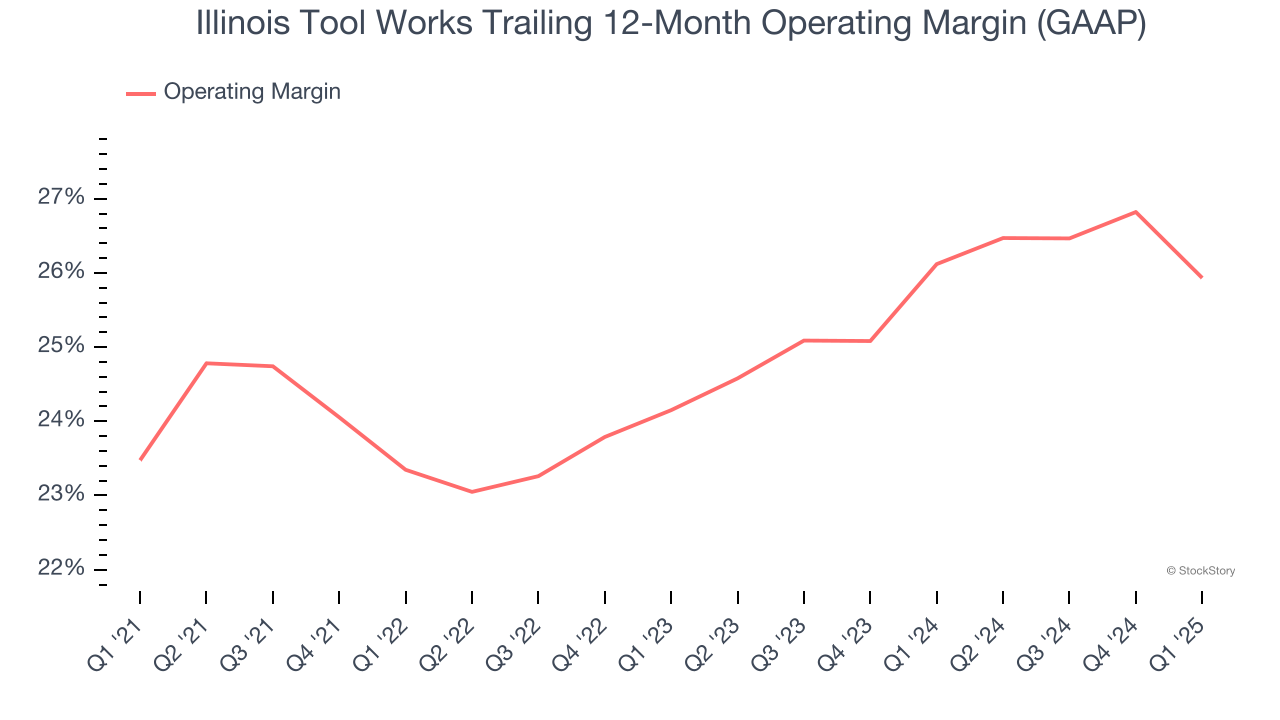
In Q1, Illinois Tool Works generated an operating profit margin of 24.8%, down 3.6 percentage points year on year. Since Illinois Tool Works’s operating margin decreased more than its gross margin, we can assume it was less efficient because expenses such as marketing, R&D, and administrative overhead increased.
Earnings Per Share
We track the long-term change in earnings per share (EPS) for the same reason as long-term revenue growth. Compared to revenue, however, EPS highlights whether a company’s growth is profitable.
Illinois Tool Works’s EPS grew at a decent 8.1% compounded annual growth rate over the last five years, higher than its 2.7% annualized revenue growth. This tells us the company became more profitable on a per-share basis as it expanded.
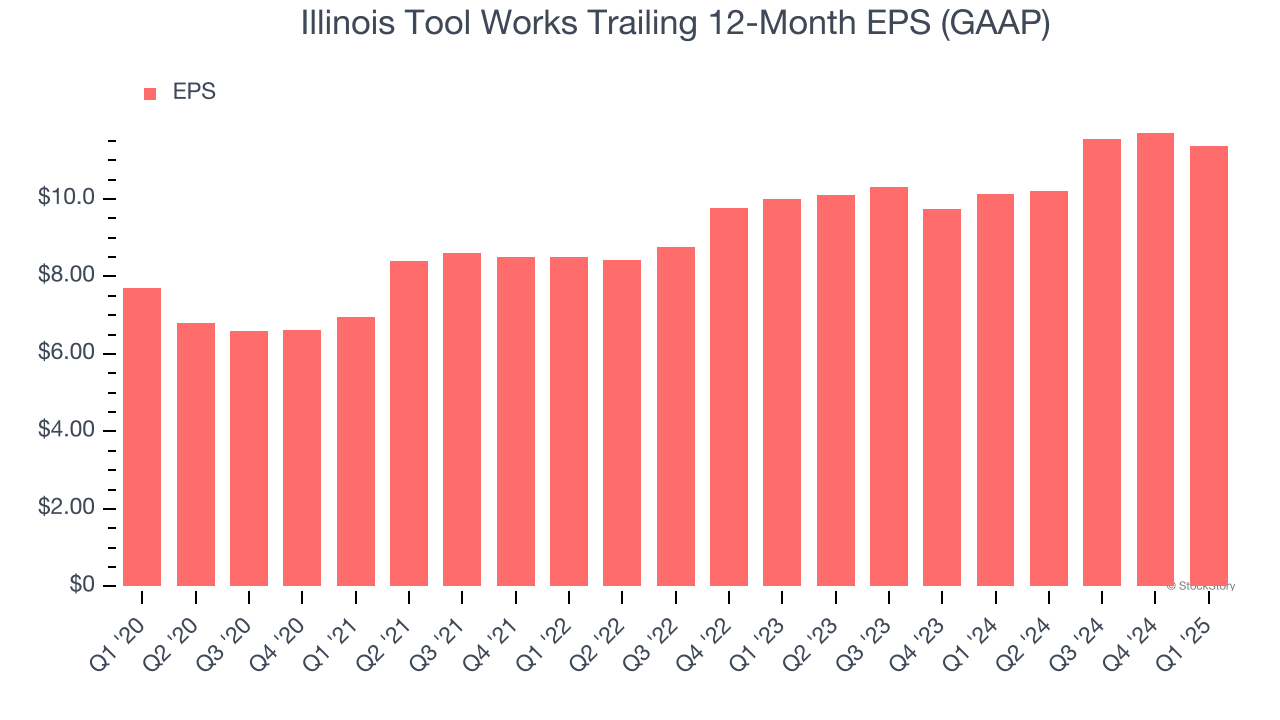
We can take a deeper look into Illinois Tool Works’s earnings to better understand the drivers of its performance. As we mentioned earlier, Illinois Tool Works’s operating margin declined this quarter but expanded by 2.5 percentage points over the last five years. Its share count also shrank by 7.9%, and these factors together are positive signs for shareholders because improving profitability and share buybacks turbocharge EPS growth relative to revenue growth. 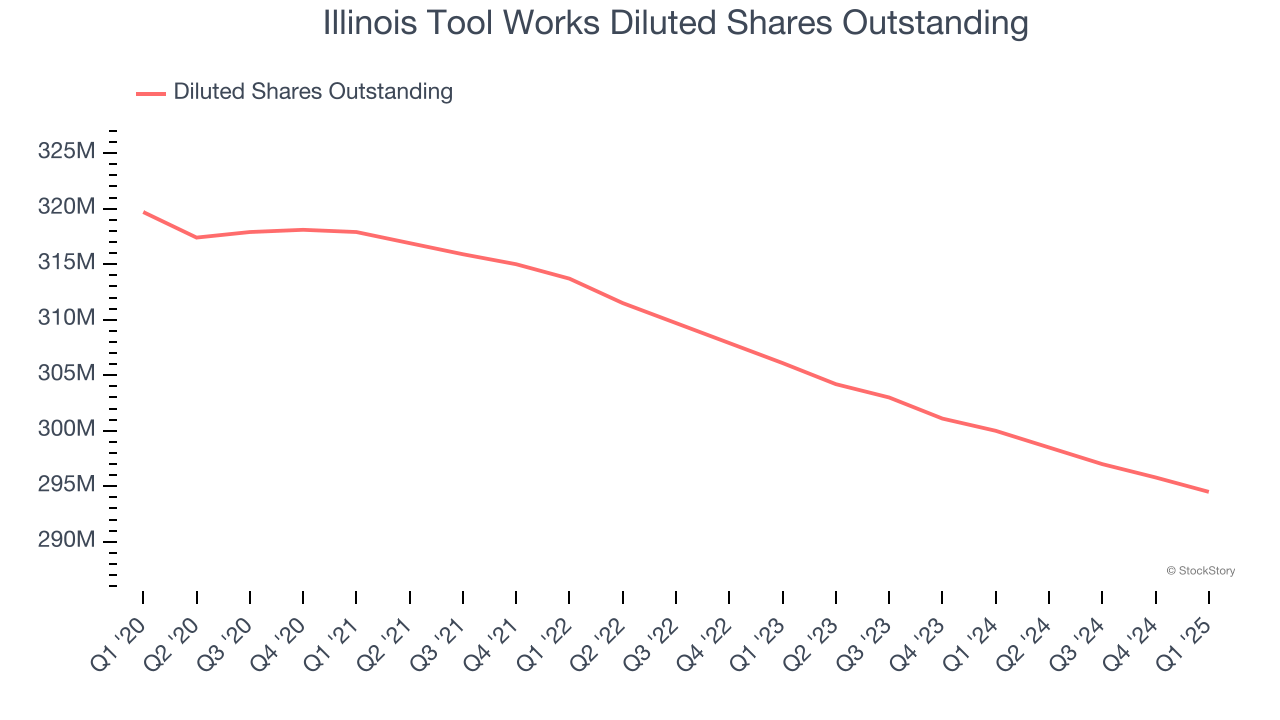
Like with revenue, we analyze EPS over a more recent period because it can provide insight into an emerging theme or development for the business.
For Illinois Tool Works, its two-year annual EPS growth of 6.6% was lower than its five-year trend. We hope its growth can accelerate in the future.
In Q1, Illinois Tool Works reported EPS at $2.38, down from $2.73 in the same quarter last year. Despite falling year on year, this print beat analysts’ estimates by 1.1%. Over the next 12 months, Wall Street expects Illinois Tool Works’s full-year EPS of $11.36 to shrink by 8.1%.
Key Takeaways from Illinois Tool Works’s Q1 Results
It was good to see Illinois Tool Works slightly beat analysts’ EPS expectations. On the other hand, its organic revenue slightly missed. Overall, this was a weaker quarter. The stock traded down 1.6% to $238 immediately after reporting.
So should you invest in Illinois Tool Works right now? What happened in the latest quarter matters, but not as much as longer-term business quality and valuation, when deciding whether to invest in this stock. We cover that in our actionable full research report which you can read here, it’s free.
